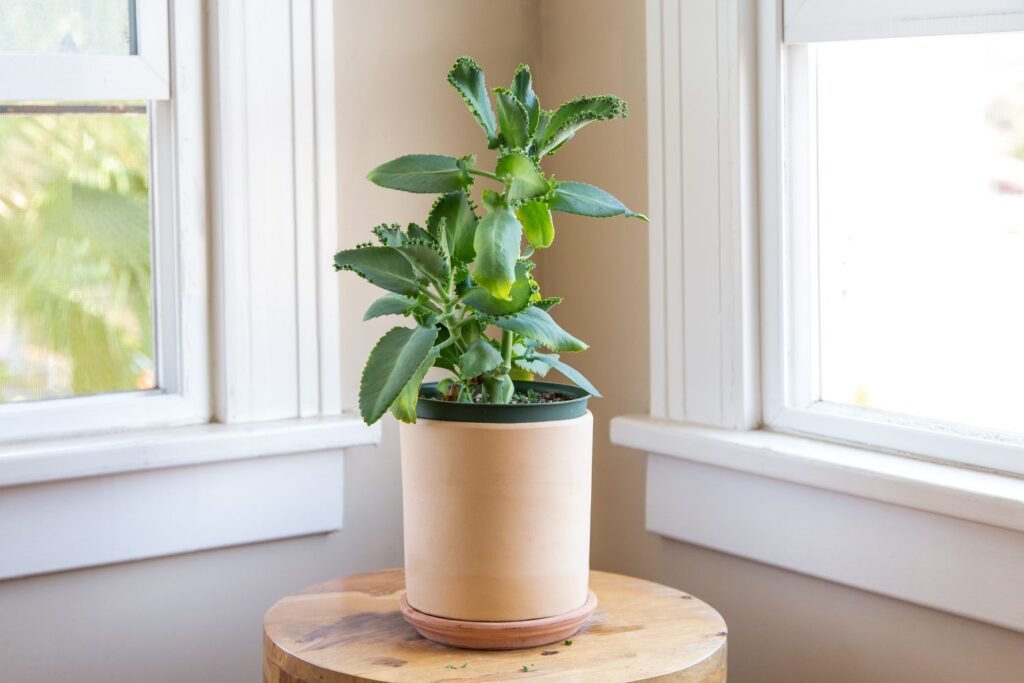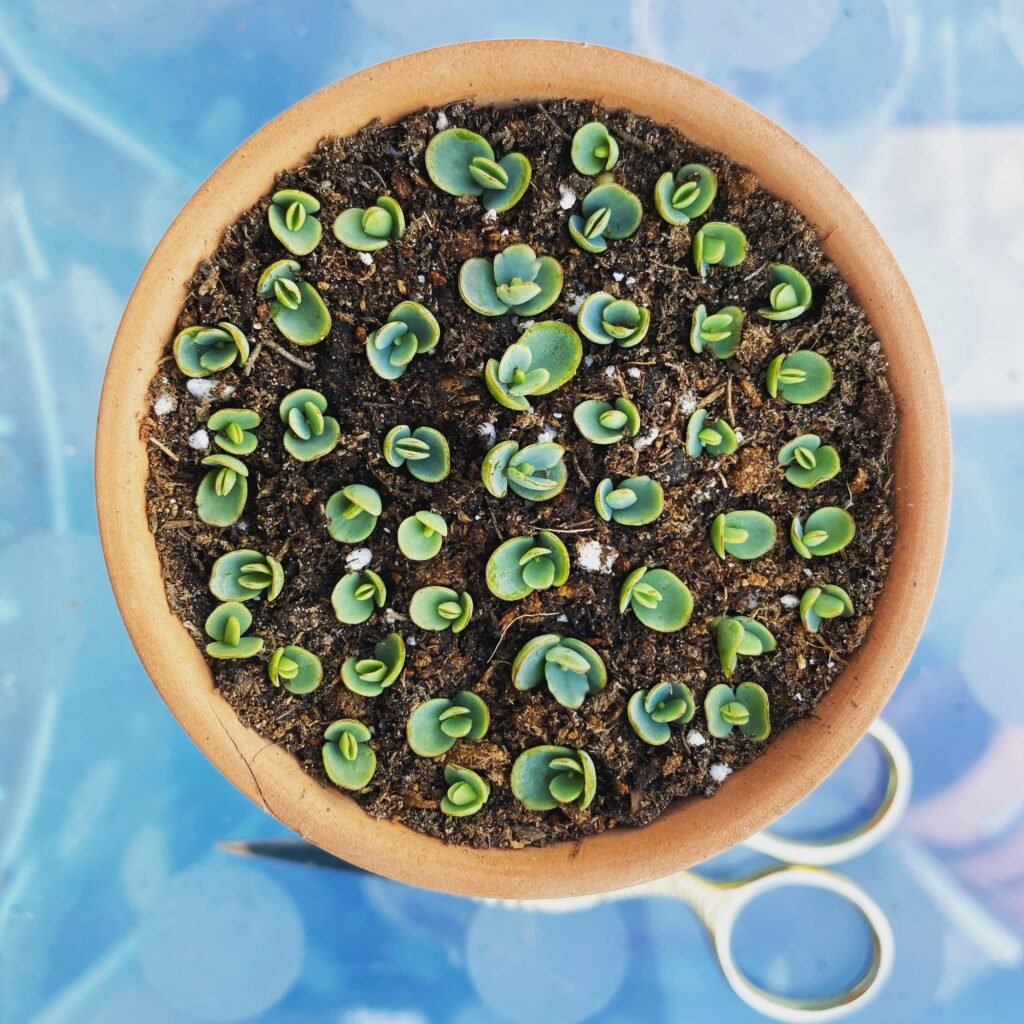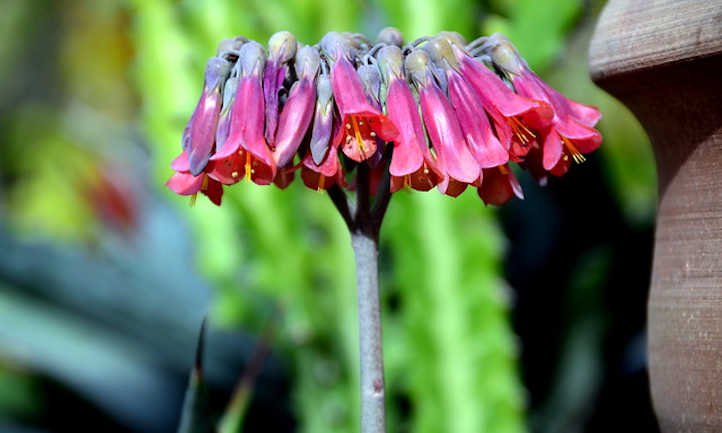How To Care For Mother Of Thousands Plant: A Complete Guide
How To Care For Mother Of Thousands Plant
The Mother of Thousand (Kalanchoe daigremontiana) is the plant that stands out as a testament to resilience, adaptability, and prolific propagation.
Mouther of thousands, also known as chandelier plant, mother of millions, and devil’s backbone, refers to a variety of species in the Kalanchoe genus, each of which has a signature growing pattern in which many small plantlets grow around the ridges of their scalped leaves. Mother of thousands thrives in full sunlight, well-draining soil, and low humidity.As guardians of these marvelous plants. As a gardener, understanding the intricacies of care for mother of thousands becomes of utmost importance.
Tips for Care For Mother of Thousands
Mother of Thousands is very easy and low maintenance to grow outside and as an indoor houseplant too. Some tips for the care for mother of thousands:
- Choose a sunny spot that receives full or partial sunlight from dusk till dawn.
- For growing indoors, place near a sun-facing window with full daylight.
- Prepare a well-draining soil mix that will not retain moisture for long and there is no stagnation of water in soil.
- Water only when the top soil is completely dry.
- Fertilize lightly during the growing months.
Crafting the Perfect Environment:
Unveiling the Marvel for Care For Mother of Thousands:
Delving into the origins and botanical characteristics that define this remarkable succulent and understanding the uniqueness in its reproducing strategy of producing thousands of plantlets along its leaf margin. unveiling and appreciating the adaptability of mother of thousand to various environmental factors.
| Climatic Factor | Requirement |
| Temperature | 60°F to 80°F (15°C to 27°C) |
| Light | Bright, indirect sunlight |
| Humidity | Moderate to low humidity levels |
| Water | Well-draining soil; water when soil is dry |
| Air Circulation | Adequate airflow around the plant |
| Frost Tolerance | Susceptible to frost; protect from freezing |
| Rainfall | Minimal; avoid prolonged exposure to heavy rain |
| Growing Season | Year-round |
Light
The mother of thousands plants usually prefers a bright spot in your home where it can appreciate several hours of sunlight. However, too much direct and intense afternoon sun can result in leaf scorch, so position them in a place where the afternoon sun doesn’t hit directly
Soil
As with most succulents, your Kalanchoe daigremontiana will need a well-drained potting medium as standing water or water stagnation is a big issue for this plant. For the best potting mix just go to your local nursery for cactus mix. Many enthusiasts use a cactus mix, and others might mix sand or perlite into a standard potting soil in appropriate proportions. Using a clay pot is desirable as it helps absorb excess moisture and takes it away from the plant while maintaining adequate temperature and moisture.
The mother of thousands is semi-drought-tolerant, but not as much as in the case of other succulent species. Your mini cactus plant will do better if it receives gradual hydration at regular interval, especially during its growing season i.e. during early summers when it just breaks its dormancy it is the best time to take care for mother of thousands. Still, it only needs water once every few weeks, even in summer. Forgetting to water your plant is not a major problem but, completely neglecting your plant can cost you with the death of your plant.
Once the first few inches of the soil surface is dry or simply you observe your top layer of the pot is completely dry, then you should rewater. By gradually dampening the soil, don’t oversaturate the roots or they will rot.
Mastering the Art of Watering:
Over watering will cause limp leaves and even rotting because during winters the plant is dormant. Establish a consistent watering routine so that you can meet the moisture needs for care of Mother of Thousand
Temperature and Humidity
Usually the Mother of a thousand plants prefers temperatures around 65 to 75 degrees Fahrenheit. Make sure your mother of thousands doesn’t receive intense UV light from the sun, direct sunlight. The plant should be kept inside as soon as temperature starts to drop below 40 degrees Fahrenheit. As being a plant of succulent family extreme cold and frost will damage the plant and leave tissue causing burn marks.

Nourishing with Care:
Most Kalanchoe species, including the mother of thousands, can live without regular fertilization. But still if you wish to nourish your plant only in winter during the growing season or just after winter is finished, as during that time the plant starts absorbing nutrients for growth. You can provide essential nutrients through regular fertilization just mixing some liquid fertilizer 2-3 drops in water to support vigorous growth. In today’s conditions, you can explore organic fertilizers for a sustainable and environmentally friendly nation.
Pruning
Other than removing dead stalks and dropped plantlets, the plant doesn’t have any other pruning requirements right..? No it’s not just the case, by implementing strategic pruning you can give and maintain desired shape, size, and style to your plant. You can encourage side branching and make your plant bushy by clipping the tip of your plant that will spread the energy toward the side branches.
Harnessing the Power of Propagation:
We have a leverage of natural reproductive abilities of the mother of thousand for propagation. You can explore various methods for the propagation of plants just like other succulents including leaf cutting and stem cutting to expand your collection of beautiful plants.
The mother of thousands can be easily propagated from the plantlets it produces rather than from seeds. The plantlets are usually ready to remove as the main plant heads towards its dormancy period in the winter. They’ll fall off naturally, or you can remove them from the leaf they’re attached to if they’re ready to detach without you applying a lot of pressure. Lay the plantlets on the surface of a well-drained and damp potting medium where they’ll begin to take roots easily—cultivating a thriving nursery of Mother of Thousand creates a sense of enthusiasm in new growers who will visit your collection.

Potting and Repotting Mother of Thousands
Generally, the only time when you’ll need to do some repotting is if the fallen plantlets have begun to take root in the pot of the mother plant and started overcrowding the pot. These should be removed and disposed of, or replanted in another container with good drainage.
If your mother of a thousand has truly outgrown its pot — with its roots coming out of the bottom of the pot and/or the plant being so large that the pot topples over —simply seek out a similar pot with a diameter that is just one size up. Prepare well-draining soil for your new pot, and gently transfer the plant without removing much of the excess soil from the old root ball.
Overwintering
During the cold winter, bring your mother of thousand plants inside. You need to care mother of thousand just like a baby now. If you are living in a cold region and your plant is grown in a pot , take your pot inside your house in a well ventilated room which receives full day sunlight. Place your plant in bright indirect sunlight as direct heat can damage leaves.
Vigilance Against Pests and Diseases:
Identify common pests on your plant leaf or stem such as aphids, mealybugs,spidermites that can cause leaf scars and suck all the cell sap of your plant and threaten your mother of a thousand. You can prevent all these pests simply by spraying soapy water off and under the leaves and on the stem and then simply rinsing the plant with water. These pests are usually seen when a plant is grown indoors with other plants. Always remove and destroy the infected plant part usually leaves.
Advanced Care Strategies:
You can push the boundaries of creativity by experimenting with the alternatives of growing methods and techniques such as hydroponics or by incorporating some technologies such as making an automated watering system that will monitor the environmental factors and water accordingly or by making a display plant by making a terrarium or vertical gardening.
How to Get Mother of Thousands to Bloom
Mother of thousands plants bloom in very specific and proper conditions, especially when they receive enough sunlight and adequate temperature.
Bloom Months
Normanly bloom months for mother of thousands depends on the species, with some blooming in spring, some blooming in winter, and some blooming year-round, especially when grown outdoors. But the blooming month for mother of thousand in late winter and early spring.
What Do Mother of Thousands Flowers Look and Smell Like
Flowers for the mother of thousands of plants vary from species to species in color, shape and size, but their growth pattern is relatively similar in all cases. The plants shoot up to the stalks that have clusters of flowers at the top. For most species, such as K. fedtschenkoi, the flowers hang downwards from the stem and form bell shapes. The flowers vary in fragrance as well, but the scent tends to be light and sweet in some species.

How to Encourage More Blooms
Usually to encourage more blooms in your plant, make sure mother of thousands succulents are receiving ample light during the period when it is coming out of its dormant season that is winter and make sure they are not nutrient-deficient.
Care for mother of thousands plant After It Blooms
Mother of thousands plants do not require any unique care after blooming unlike other annuals. Deadhead the spent stems, and continue to care for the plant as you have been doing all the time. When it comes to Care for mother of thousands plant, deadheading spent blooms will stimulate the growth of new flowers.
Troubleshooting Challenges:
You should address some common issues such as yellowing of leaves, leggy stem growth or root rot with a solution of each problem. You should adopt a care practice for environmental stresses like temperature fluctuation or excessive humidity. You can seek guidance from online communities or local nursery guide to overcome these obstacles
Cultivating a Bond Through Care:
Recognizing the bond, symbiotic relationship between you and plant, where Care for mother of thousands plant has become a beautiful act of nurturing both the physical and spiritual self. Embrace your journey of nurturing the plant as a rewarding and fulfilling endeavor, share your joy of gardening and cultivating with other fellow beings and spread the community of gardeners.
–
Conclusion:
We all are in a rush to perfect the art of growing but the one thing to remember is that you can never perfect the supreme nature. In the pursuit of mastering the Care for mother of thousands plant we embark on a journey that makes connections with nature and its power and unique features. Through deep appreciation and diligent attention to the complexity and intricacies of this marvelous plant, we have unlocked the secrets of keeping our planet healthy, vital, and abundant in all climates. May this article serve as a medium for empowerment, inspiring gardeners of all levels to embark on their journey. Thank you
“Flowers are restful to look at. They have neither emotions nor conflicts”
– Sigmund Freud

